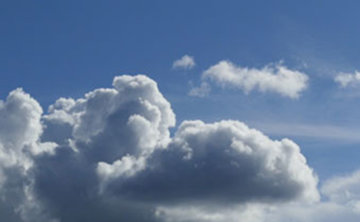"Hammer"-Astronomy Year 2025: As Many Celestial Phenomena as Not Seen in a Long Time
There will be a partial solar eclipse (29.3.) and two total lunar eclipses (14.3., 7.9.). Given the high solar activity, the chances are high to see the Northern Lights in Austria again next year. In addition, amateur astronomers are eagerly awaiting the outbreak of "T Corona Borealis".
For the head of the Vienna Working Group for Astronomy (WAA), Alexander Pikhard, after a longer dry spell, the astronomy year 2025 is indeed a "hammer year", as he told APA. A highlight will certainly be the partial solar eclipse on March 29. It can be observed in full from Austria, with the sun being obscured by 14 percent (based on the diameter). The celestial spectacle begins at 11.40 a.m. (in Vienna), with maximum coverage at 12.17 p.m. The eclipse lasts a total of one hour and eleven minutes. Adequate protection such as eclipse glasses or solar filter film is necessary for observation. The second partial solar eclipse on September 21, 2025, cannot be seen from Austria, but only from the South Pacific and New Zealand.
2025 can also boast two total lunar eclipses, which are partially visible in this country. The first one on March 14 is less spectacular: When the moon sets at 6.15 a.m. (Vienna), it will only be obscured by nine percent in the umbra. The eclipse on September 7 will be more beautiful: At moonrise at 7.21 p.m. (Vienna), the moon will already be 86 percent in the earth's umbra. The total eclipse begins at 7.30 p.m. and lasts until 8.53 p.m.
Astronomy Year 2025: Shooting Stars and Star Explosion
Throughout the year, shooting stars can be seen in clear skies, but it is particularly worth looking up when the Earth crosses a comet's path on its orbit around the sun. Then so-called meteor showers appear, the intensity of which varies from year to year. How many shooting stars can be seen also depends on the prevailing moon phase, which is not very favorable in 2025. The Perseid meteor shower is probably the most pleasant to observe in terms of temperature: It promises many shooting stars around its maximum on August 13.
In 2025, a new star should also appear in the firmament - at least for a few days: Astronomers have been expecting a star explosion in the star system "T Coronae Borealis", about 3,000 light years away, for months. "All previous predictions have not held, it can happen at any time," said the chairman of the Astronomical Center Martinsberg (AZM) in Waldviertel (Lower Austria), Michael Jäger, to APA. "T Coronae Borealis" is a binary star system in which a white dwarf, the final stage of a giant sun, sucks matter from its neighboring star. This process discharges after exceeding a critical limit about every 80 years in a nuclear explosion. As soon as this is the case, "T Coronae Borealis" will shine as bright as the North Star for about a week; it can be found in the constellation of the Northern Crown.
Double Visibility of Venus
Many amateur astronomers are also interested in the occultation of stars and planets by the moon: This will happen next year with Saturn (4.1.) and Venus (19.9.). In addition, there will be a double visibility of Venus in the evening and morning sky (18.-21.3.). And right at the beginning of the year, there is a great planetary parade in the evening: Venus, Saturn, Jupiter, and Mars are visible at the same time, says Jäger.
As the current solar cycle is just reaching its maximum, experts can also make fairly accurate forecasts for the Northern Lights: Christian Möstl, head of the Space Weather Office of Geosphere Austria, expects that in 2025 about as many solar storms will hit the Earth as in the outgoing year 2024, when there were about 40 to 50. "From our experience, about ten percent of them, i.e., three to five, have the potential for Northern Lights in Austria," Möstl told APA. As fascinating as the sight of the Aurora Borealis is, Möstl hopes that the solar storms are not too strong and therefore cause little or no problems with the technical infrastructure such as satellites, which can be disturbed by the geomagnetic storms emanating from the sun.
(APA/Red)
This article has been automatically translated, read the original article here.





